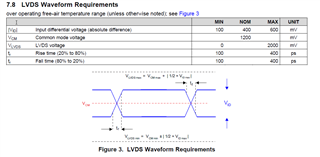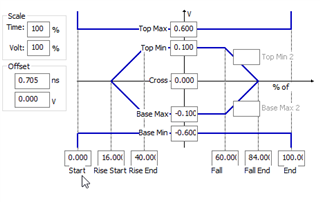Hello.
I am working with Mentor HyperLynx SI tool. I need to define a TI LVDS eye mask.
The TI datasheet specify the attached data. I am not sure how to translate it to the eye diagram in UI units.
i attached the datasheet data and the mask a colleague created . is this correct? if yes , what is the calculation to achieve those figures.
thank you very much!


-
Ask a related question
What is a related question?A related question is a question created from another question. When the related question is created, it will be automatically linked to the original question.

